This is the first in a series of tests of the new Voigtlander macro lens. To see all the tests, scroll to the bottom of this pace — below the comments — and click on the ping-back links whose titles interest you.
I received my Voigtlander 65 mm f/2 Apo-Lanthar yesterday and tested it off-axis to make sure it was a good copy.
https://blog.kasson.com/lens-screening-testing/examples/good-60-mm-ff-lens/
It is.
The lens is metal and solid. Focus throw is about 300 degrees, which is about as good as you can do without a really expensive helicoid like Leica uses sometimes. That makes distance focus wide open a little twitchy. The lens comes with a circular screw-on hood that doesn’t look like it would help much. I was initially put off by that but soon determined that the lens cap would also fit on the end of the hood. I’ve decided to just leave the hood on. The fact that it’s only a little over half an inch long, which I at first considered a drawback, is now a plus for compactness if you’re going to leave it attached.
Today I tested the lens for longitudinal chromatic aberration (LoCA) and focus shift. I made a series of exposures at each whole f-stop from f/2 through f/11, at a reproduction ratio of 1:10 using a motorized rail and this protocol:
- Sony a7RII
- Double-edged razor blad backlit with Wescott LED panels aimed at white diffuser
- ISO 100
- Manual exposure
- Manual focus, set at one position
- Cognisys computer-driven focusing rail
- 100 exposures 100 um apart
- Lens distance set at 1:10 magnification mark
- Document mode decoding with DCRAW
- MTF50s for all the raw color planes calculated using MTF Mapper
- Graphing in Excel
Here’s a picture of the test setup:
The camera and rail are on the left. The Cognisys controller and battery are below them, slung among the tripod legs. The razor blade is mounted on the tripod in front of the camera. The two Wescott lights are on the light stands. The white diffuser is taped to the door.
Here are the results at f/2 (I apologize for getting the captions wrong here. It’s a 65 mm lens, not a 60 mm one):
Distance in cm is plotted as the horizontal axis, with the left-hand size having the subject further from the camera than the right-hand side (The camera moves closer to the subject by 100 um after each exposure). The vertical axis is MTF50 in cycles per picture height (cy/ph), which is a good proxy for sharpness.
The first thing to notice is how sharp this lens is wide open. The lowest peak is about 2000 cy/ph, which is very sharp indeed.
The next thing is that there is little LoCA, which presents as the difference measured horizontally in the peaks of the three color channels.
At f/2.8:
Now the lens is even sharper. I don’t think I’ve seen this level of on-axis sharpness on the a7RII before. The blue channel peak has moved over so that it’s nearer the green channel, and the red channel has stayed about as far apart as it was wide open.
To give you an idea what a spectacular performance this is, compare it to the very sharp Soony 90 mm f/2.8 macro at the same f-stop and reproduction ratio:
The horizontal axis as scaled differently, so the peaks appear wider in the case of the Sony lens. Notice that the green channel peak with the 90 is about 1700 cy/ph, and compare that to the 2300 cy/ph peak of the Apo-Lanthar.
At f/4:
Not quite as sharp as at f/2.8, but still very sharp indeed.
Let’s compare that to the Sony 90:
The Apo Lanthar is somewhat sharper, though probably not enough to make any real-world difference. It has less LoCA than the already-exemplary Sony, but again, that’s probably something you’d only notice in the lab.
Let’s compare the Apo Lanthar to the macro LoCA champ, the Coastal Optical 60 mm f/4, also at 1:10:
OK, the super-expensive CO lens is better for LoCA. But it’s not as sharp. How about that!
At f/5.6:
Now the depth of field completely covers up the small amount of LoCA.
At f/8:
And finally, at f/11:
Now let’s plot the green channel curves for all the above apertures on one graph so we can get an idea of the amount of focus shift as you stop down:
There is very little focus shift that won’t be covered up by increasing DOF as you stop down. You can be confident focusing this lens wide open.
I am seriously impressed.

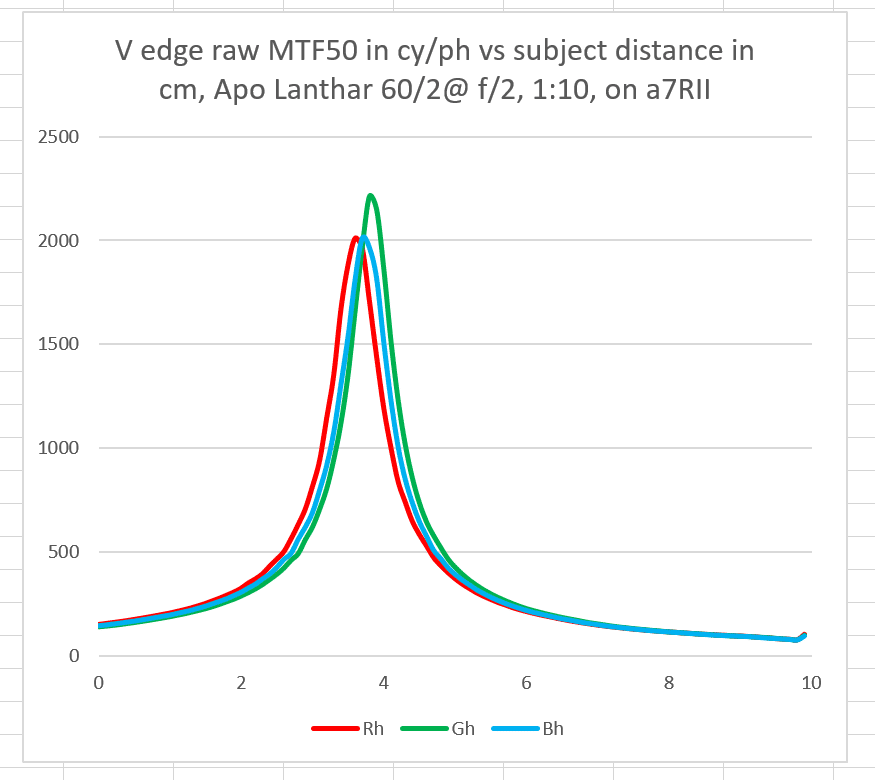
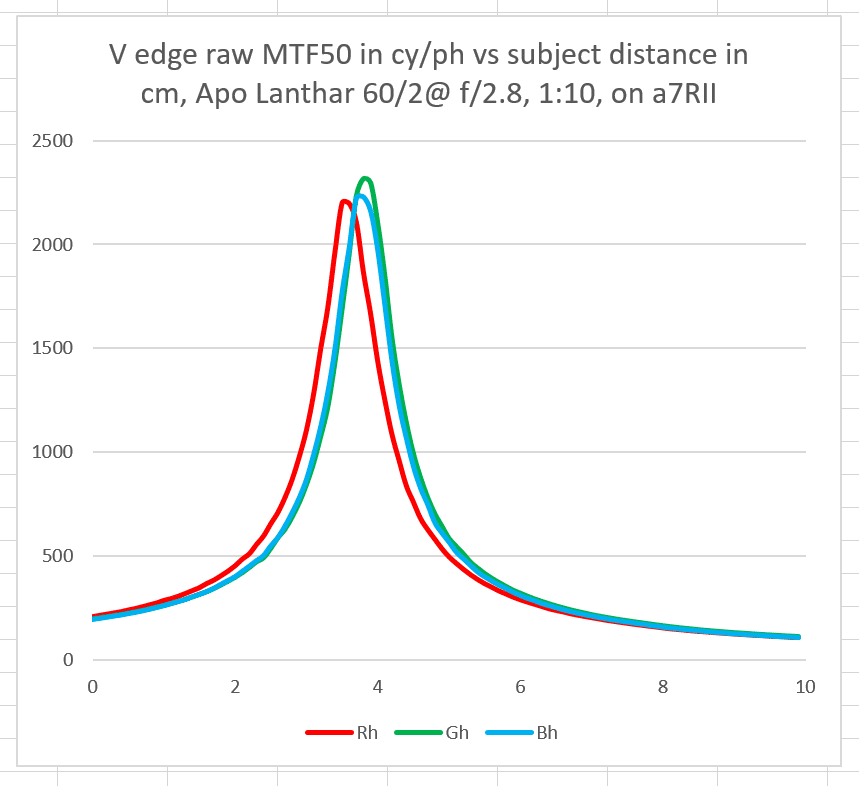
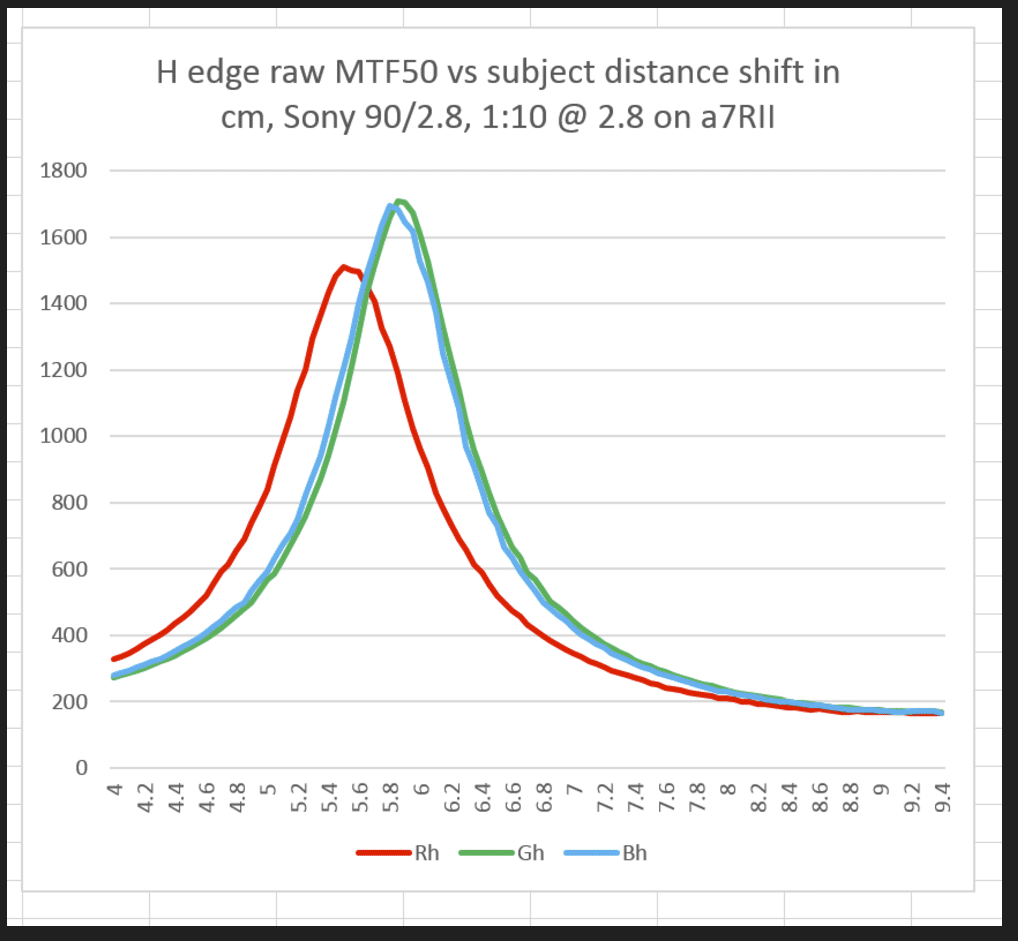
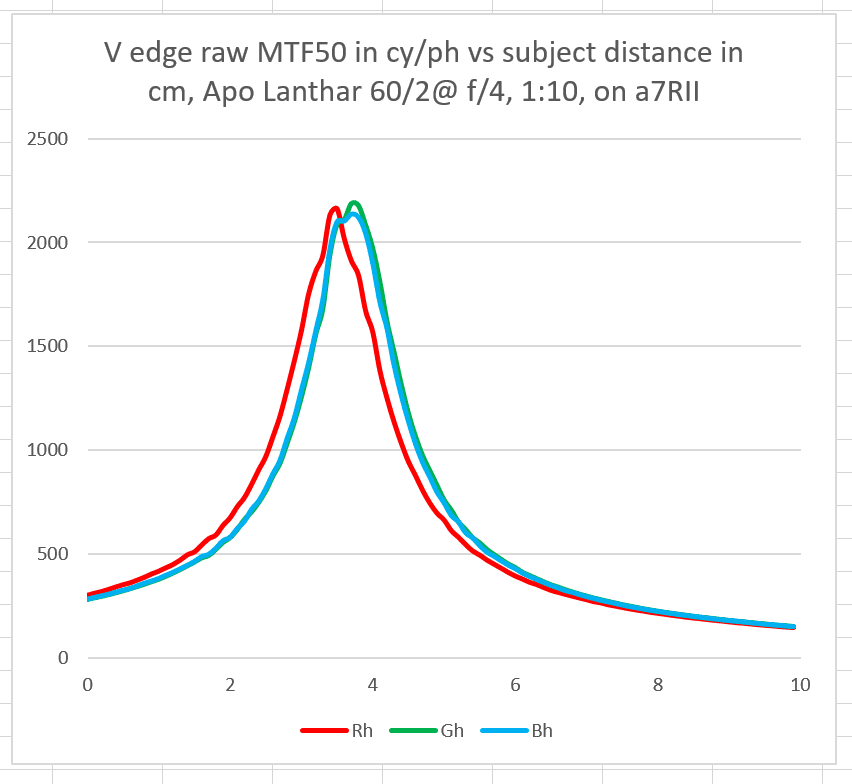


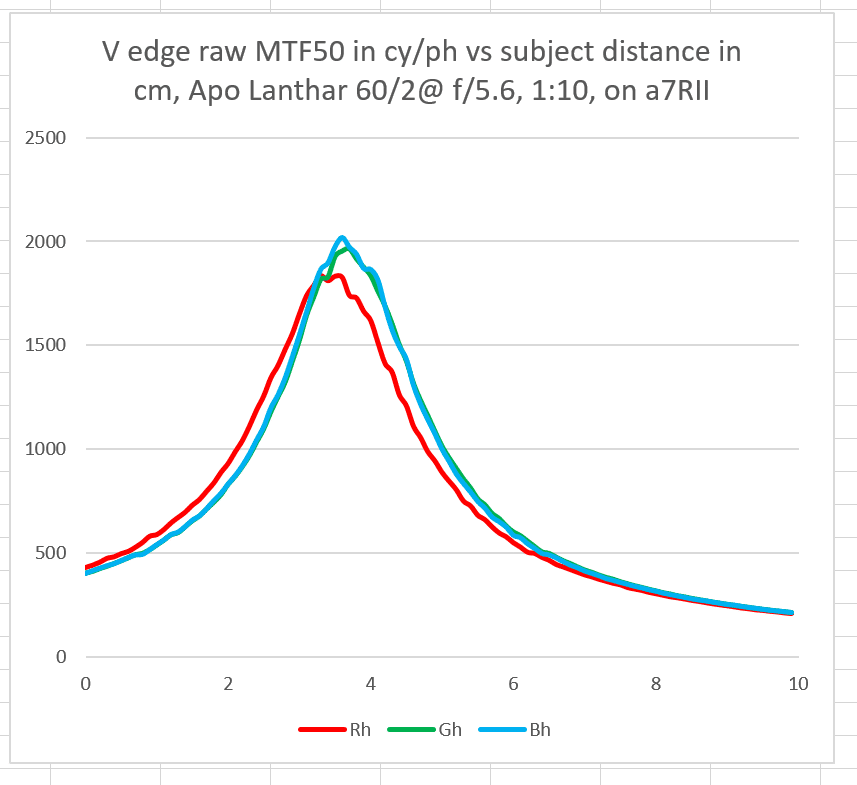
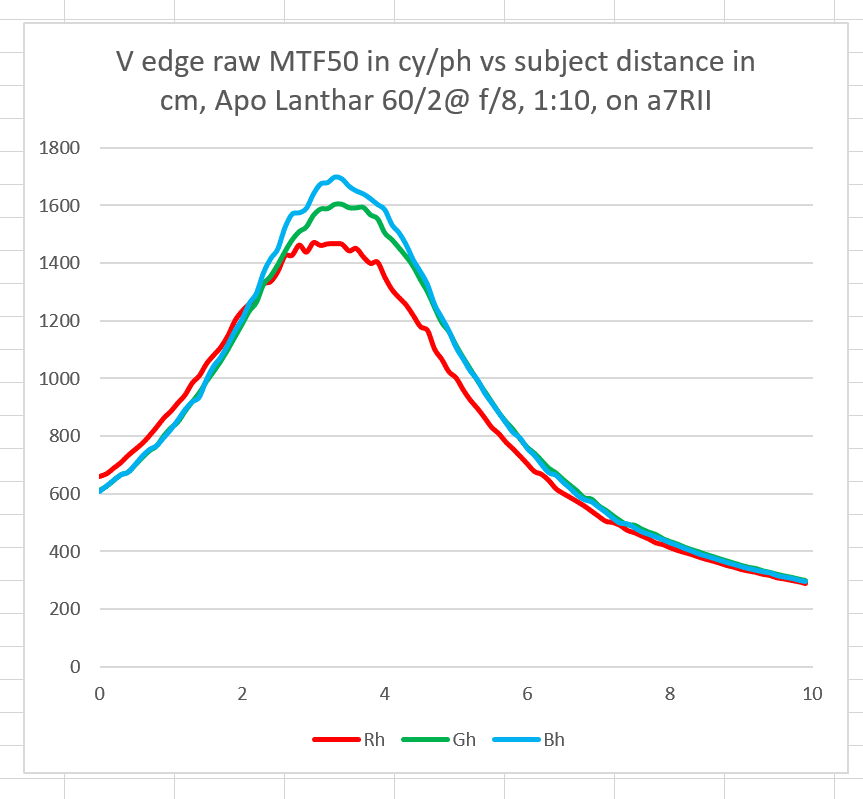

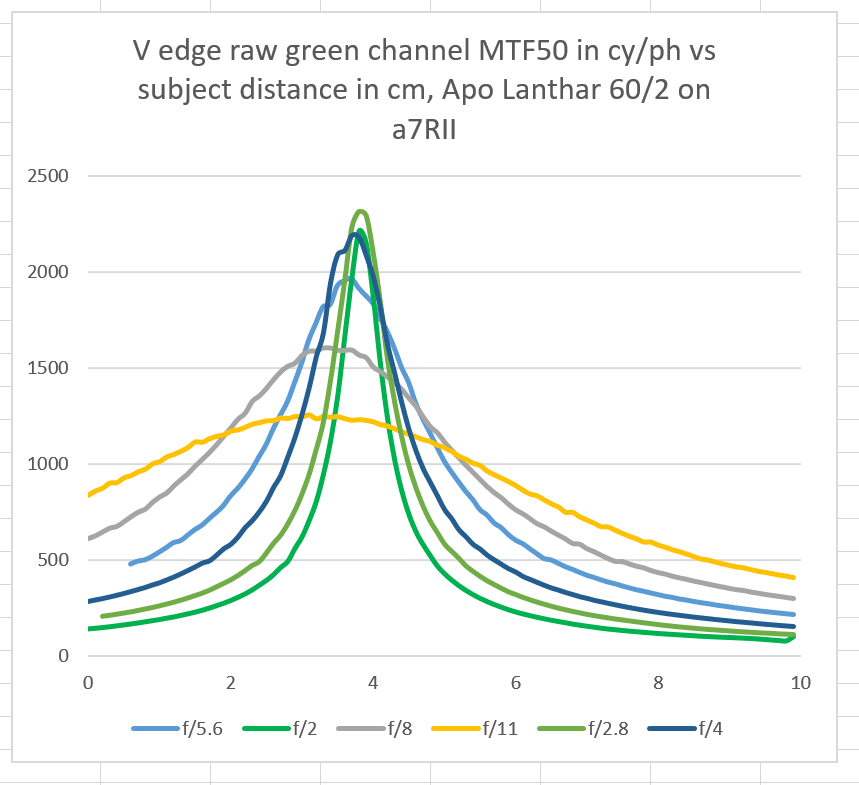
AndrewZ says
Very impressive. I’ve been contemplating this lens myself but have been worried about how It handles as its the biggest lens under 85mm I’ve ever seen so imagine the balance is not that great. Also love these LoCa graphs as I’ve said before (ever thought of doing the 180 telyt?). Why do the MTF’s start to wobble/ring as the lens stops down?
FredD says
Thanks for these tests, very informative and very much appreciated, but I do hope that before too long you’ll follow up with tests of this lens at 1:2 reproduction ratio, as you previously did with the Sony, Zeiss, Nikkor, & Leitz macros!
Also, do you have either any tests or theory-based recommendations for the best way to get a 1:2 macro down to 1:1? (By “best”, I mean in terms of the standard performance metrics such as resolution, sharpness, distortion, flatness of field, etc. . As far as “way”, that would be tubes, teleconverters, achromatic doublets, individually or in some combination.)
Thanks in advance!
Chris says
It’s the same at 1:2. I tested that first, was quite perplexed to get best results at f/3.2 (center, on the A7R2), and thought “I’ll surely be worse at portrait distance”. Not so. A very nice lens. Wish it had a smaller filter size, but that’s about it.